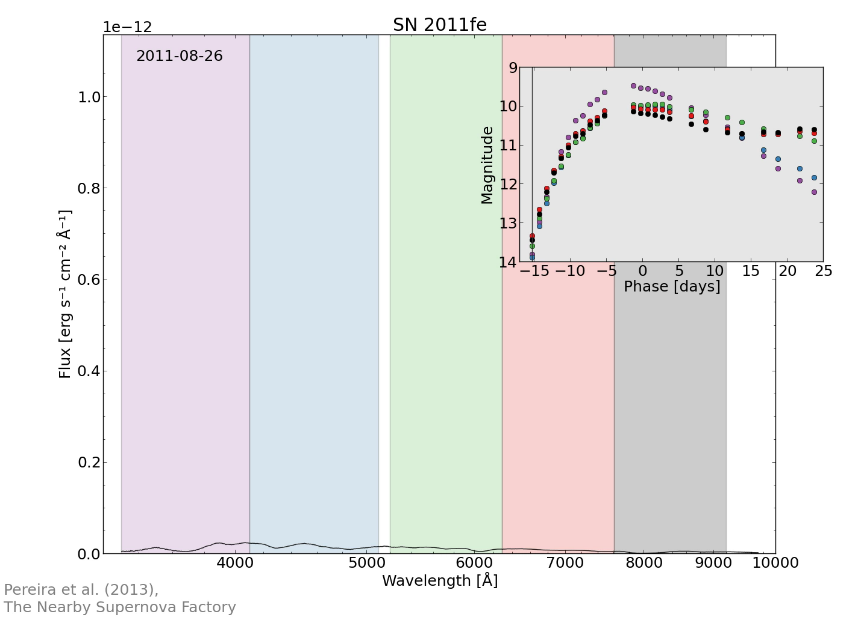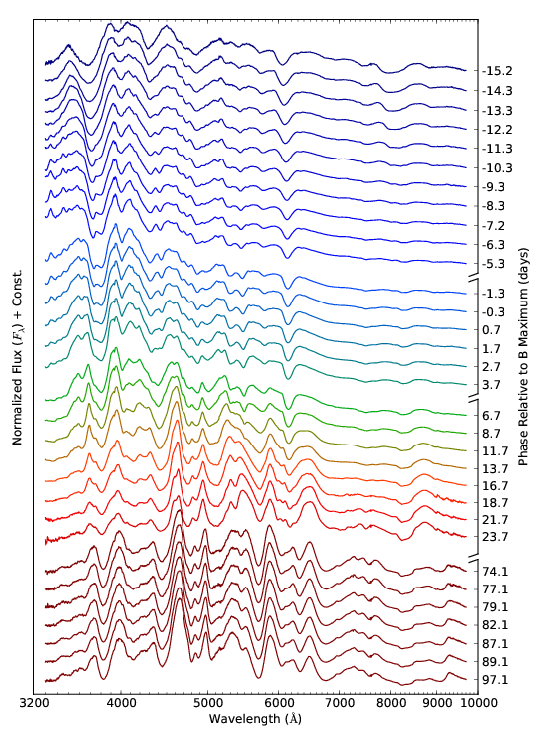

Since the discovery of the accelerated expansion of the universe by supernovae in 1999, successive supernovae observation projects have significantly improved the accuracy of the Hubble diagram, which The cosmological parameters, especially to constrain the equation of state of the black energy. To measure with precision the kinematics of the expansion of the universe with the supernovae it is necessary to have measurements of objects close (z <0.2) and far (z> 0.7) to have a sufficient lever arm. It is thus possible to divide the supernovae projects into two broad classes, each having different constraints and specific objectives: the measurement of near supernovae and the measurement of distant supernovae.

No description
It requires a very wide exploration of the sky to acquire enough of these rare events. On the other hand the large flux makes it possible to be content with a telescope of small size. This important flow also makes it possible to make dedicated follow-ups allowing, for example, a detailed spectral analysis.
The objectives for cosmology are then two-fold: measurement and precise study of the population of supernovae Ia and their host galaxy on the one hand and precise measurement of the distances at low redshift, outside the Hubble flow, thus providing a reference point For measuring acceleration at higher redshift.
The SNFactory project published the data taken between 2004 and 2009. The observation was extended over 4 years with a significant participation of the MPCC. The aim of this experiment is to obtain spectrophotometric light curves for a few hundred SNIa and for a redshift range from 0.03 to 0.08. The first results on standardization using ratios in the spectra show less dispersion than photometric standardization. Analyzes of the spectral data are oriented towards the subclassification of type Ia supernovae and the understanding of color effects with implications for current and future cosmology and understanding of explosion mechanisms.

No description
By Dominique Fouchez